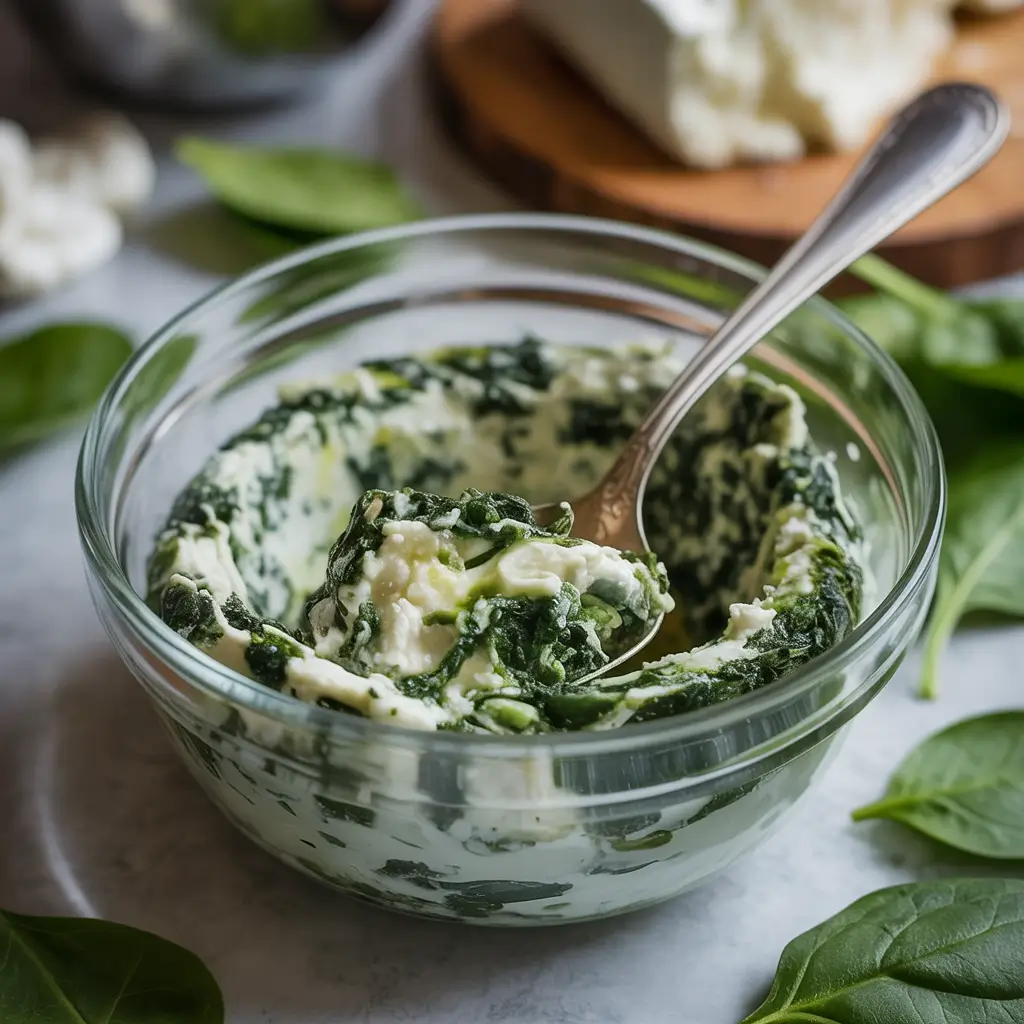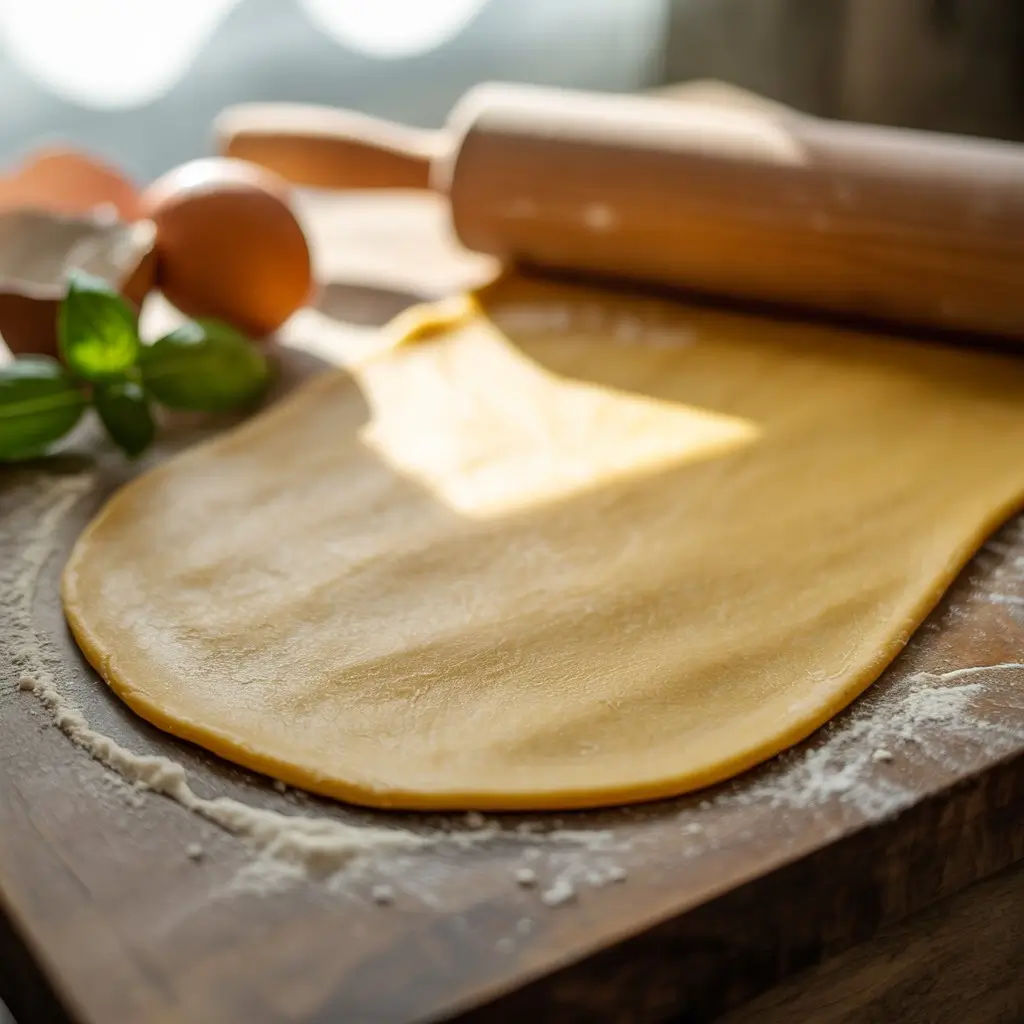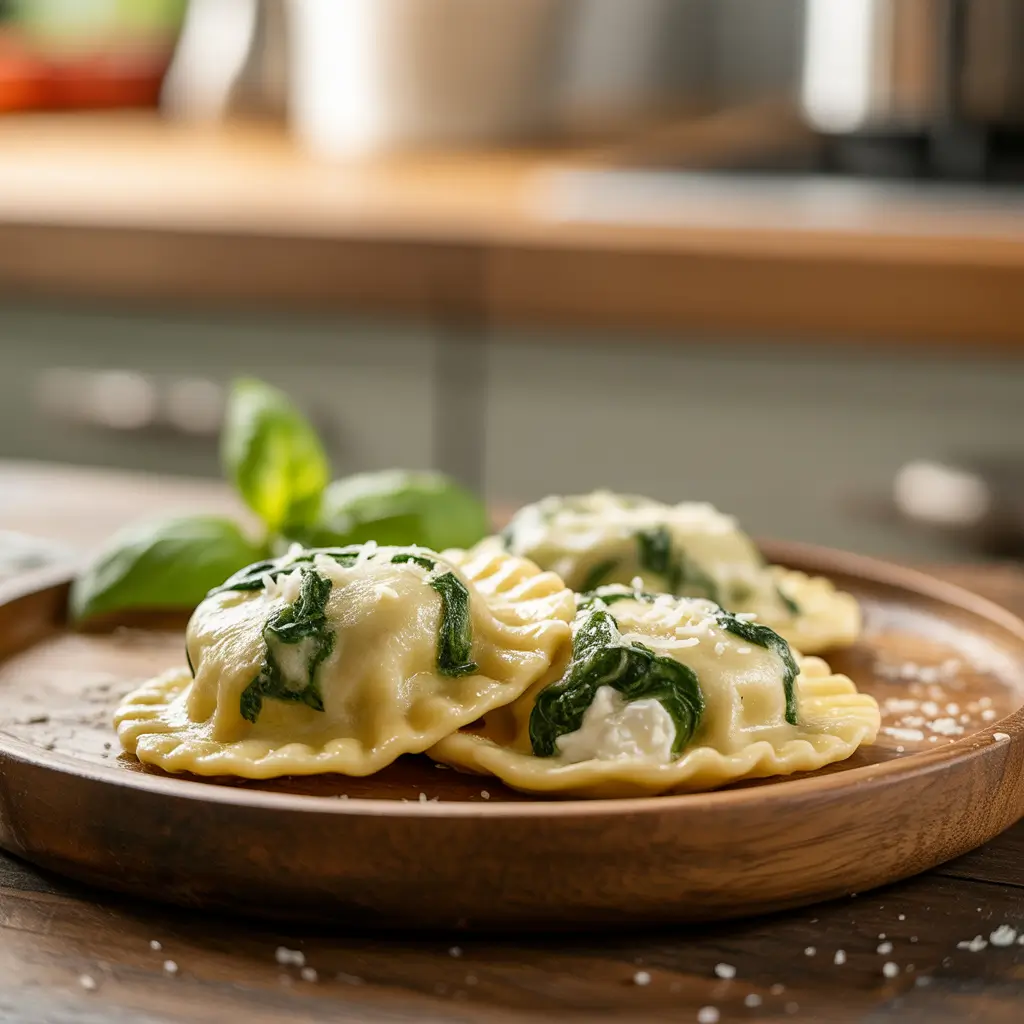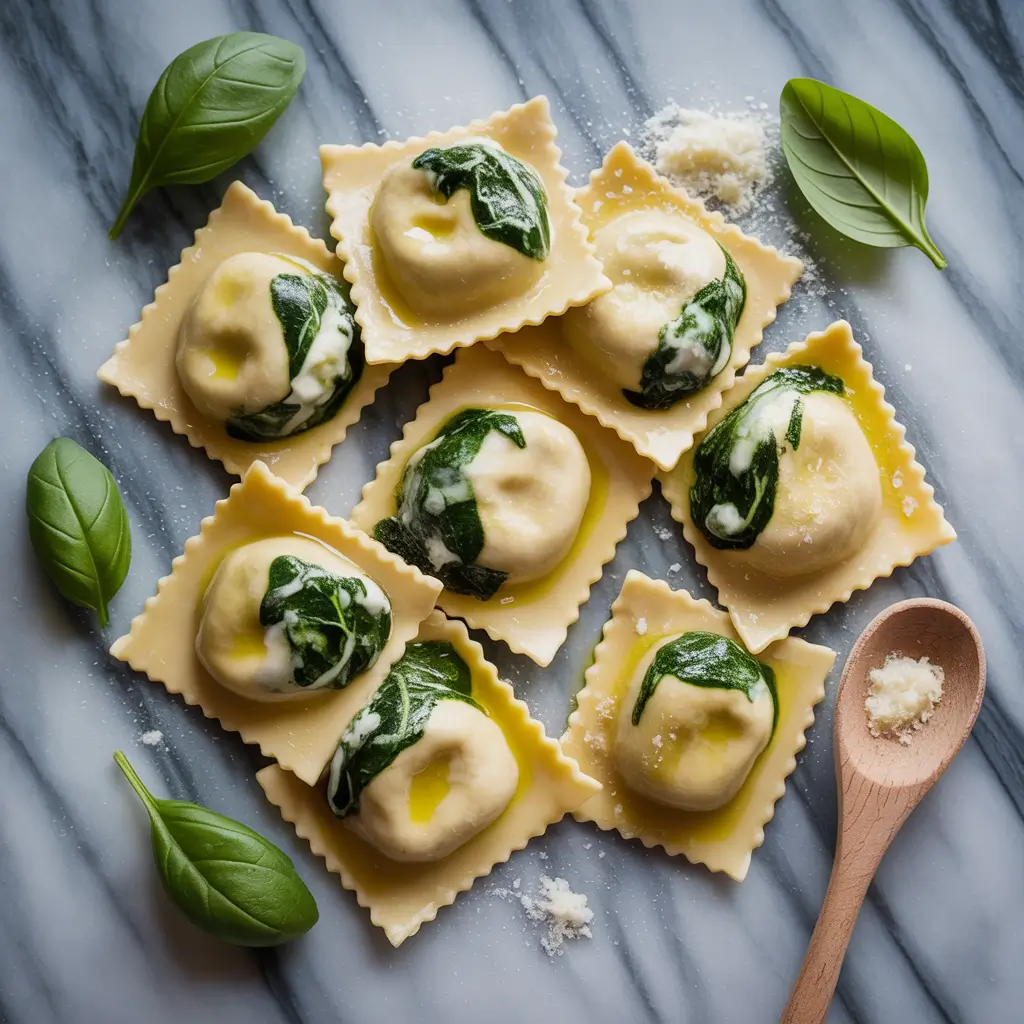Ricotta cheese and spinach ravioli is a comforting Italian classic that brings together creamy filling, delicate pasta, and rich tradition—all in one bite. Whether you’re cooking for your family or treating yourself to a restaurant-quality dinner at home, this stuffed pasta dish delivers elegance without complication. In this ultimate guide, you’ll learn how to make ravioli from scratch, including fresh pasta dough, flavorful spinach-ricotta filling, perfect sauces, and smart cooking tips.
We’ll also explore healthier tweaks, expert techniques for shaping and sealing, and delicious pairings to make every plate unforgettable. Whether you’re a seasoned home cook or new to pasta-making, this step-by-step resource has everything you need to master ricotta and spinach ravioli like a pro.
Looking for inspiration? Try this trending food idea on Zestolla before diving into the rich world of homemade Italian pasta.
PrintRicotta Cheese and Spinach Ravioli: The Ultimate Homemade Guide
A soul-satisfying ravioli filled with creamy ricotta and fresh spinach, perfect for homemade pasta lovers.
- Prep Time: 45 minutes
- Cook Time: 10 minutes
- Total Time: 55 minutes
- Yield: 4 servings 1x
- Category: Main Course
- Method: Boiled
- Cuisine: Italian
- Diet: Vegetarian
Ingredients
- 2 cups all-purpose flour
- 3 large eggs
- 1/2 tsp salt
- 1 splash of olive oil (optional)
- 1 cup whole milk ricotta (well-drained)
- 1 cup fresh spinach (sautéed and chopped) or 1 cup frozen spinach (thawed and drained)
- 1/2 cup grated Parmesan cheese
- 1/4 tsp ground nutmeg
- Salt and cracked black pepper to taste
- Lemon zest (optional)
- 1 clove garlic, minced (optional)
- Fresh basil, chopped (optional)
Instructions
- Make pasta dough: Mix flour, eggs, salt, and optional olive oil. Knead for 8-10 minutes. Rest for 30-45 minutes.
- Prepare filling: Combine ricotta, chopped spinach, Parmesan, nutmeg, salt, pepper, and optional lemon zest or garlic. Chill 20-30 minutes.
- Roll out pasta dough to 1/16 inch thick sheets.
- Spoon filling onto pasta sheet, cover with another sheet, and seal with water or egg wash. Cut into desired ravioli shapes.
- Boil ravioli in salted water: 3-4 minutes fresh, 5-6 minutes frozen.
- Serve with sauce: brown butter sage, tomato basil, or garlic olive oil drizzle. Garnish with Parmesan or fresh herbs.
Notes
Use whole milk ricotta for creaminess and avoid watery fillings. Chill filling before assembling for best results.
Nutrition
- Serving Size: 1 cup cooked (6 ravioli)
- Calories: 325
- Sugar: 2g
- Sodium: 280mg
- Fat: 16g
- Saturated Fat: 7g
- Unsaturated Fat: 8g
- Trans Fat: 0g
- Carbohydrates: 33g
- Fiber: 2g
- Protein: 15g
- Cholesterol: 100mg
Keywords: ricotta, spinach, ravioli, homemade pasta, Italian, vegetarian
Why Ricotta Cheese and Spinach Ravioli Is a Classic Favorite
The Origins of Ravioli and Ricotta Spinach Filling
Ravioli has roots deep in Italy’s culinary history, going back to the 14th century when it was often served in a rich broth. Over time, variations evolved across regions—especially in Tuscany, Lombardy, and Liguria. Among the most cherished versions is ravioli stuffed with ricotta cheese and spinach, a pairing that strikes the perfect balance between creamy and earthy.
Ricotta, a soft Italian cheese made from whey, lends a light sweetness and velvety texture. Spinach contributes color, nutrients, and a mild bitterness that enhances ricotta’s richness. This combination quickly became a staple in Italian homes due to its affordability, flavor harmony, and adaptability to both rustic and elegant meals.
Why This Combo Is a Timeless Italian Staple
There’s a reason ricotta and spinach ravioli is featured in Italian restaurants and family kitchens alike—it’s simply satisfying. The gentle flavor of ricotta allows for endless creativity, from rich brown butter sage sauces to bright tomato blends. Spinach not only adds nutrition but gives the filling structure and vibrancy.
Even better, this ravioli is vegetarian-friendly, making it an easy favorite for meatless meals. Whether you prepare it by hand or with a ravioli mold, the end result always delivers that classic Italian soul-food comfort.
Don’t miss our zero-carb snack hit for more ideas on how to mix indulgence with smart eating.
Explore more filling ideas and pasta trends on Pinterest by Gadeser Ahmed—where creativity meets home-cooked beauty.
Key Ingredients for Perfect Ricotta Cheese and Spinach Ravioli

Best Type of Ricotta Cheese and Spinach Ravioli: Fresh, Whole Milk, or Low Fat?
When it comes to making perfect ricotta cheese and spinach ravioli, the ricotta you choose truly matters. Fresh, whole-milk ricotta is the gold standard. It’s creamy, rich, and not overly wet—ideal for forming a firm yet luscious filling. Avoid overly processed or watery ricotta sold in tubs, as it can make your filling runny and difficult to seal.
If fresh ricotta isn’t available, strain your store-bought version through cheesecloth overnight to remove excess moisture. This step makes a big difference in achieving that velvety, non-soggy filling texture that holds up beautifully during boiling.
Some recipes use part-skim or low-fat ricotta to cut calories, but the flavor and mouthfeel often fall short. For the best balance between taste and structure, always go for quality, whole-milk ricotta.
Spinach Tips: Fresh vs Frozen, and How to Prep Ricotta Cheese and Spinach Ravioli Right
Spinach adds color, flavor, and a nutritional boost to this vegetarian ravioli. You can use either fresh or frozen spinach—both work well, but the prep process is different.
- Fresh spinach: Wash and sauté it quickly in olive oil with a pinch of salt. Then let it cool and squeeze out all moisture using a clean towel or cheesecloth. Chop finely before mixing it into the ricotta.
- Frozen spinach: A convenient option, but moisture is the enemy. Always thaw completely and drain thoroughly. You’ll be surprised how much liquid is in even a small amount.
For added flavor, try sautéing the spinach with a bit of garlic or shallot before blending it into the ricotta. This adds a layer of savoriness that makes your ricotta cheese and spinach ravioli stand out from the rest.
Don’t miss our bold snack ideas for more recipes that turn everyday ingredients into something amazing.
Want to explore rich pasta fillings? Visit HighTasty.com for more inspiration that goes beyond basic ravioli.
Looking for modern food ideas? Discover Chef Ruby’s Pinterest feed where spinach pasta, ricotta tips, and trending techniques shine.
How to Make Ricotta Cheese and Spinach Ravioli
The soul of any great ricotta cheese and spinach ravioli lies in its filling. Done right, it’s creamy, savory, and holds its shape inside the pasta. The good news? You don’t need fancy ingredients—just smart prep and balance.
Start with whole milk ricotta that’s been well-drained. Watery ricotta leads to leaks, so press it through a fine sieve or cheesecloth to remove excess moisture. For the spinach, you can use either fresh or frozen. If using fresh, sauté it briefly until wilted, then squeeze dry and chop. For frozen spinach, thaw completely and press out the liquid thoroughly.
Now combine your Ricotta Cheese and Spinach Ravioli in a bowl. Add finely grated Parmesan cheese, a pinch of salt, cracked black pepper, and a dash of nutmeg. These flavors build the base. Want to brighten it up? Add some lemon zest. Looking for more depth? Stir in sautéed garlic or fresh chopped basil.
The mixture should be thick, not runny. If it’s too loose, sprinkle in a spoonful of breadcrumbs or more Parmesan to tighten it up. Chill the filling for 20–30 minutes before using—it makes assembly much easier and cleaner.
This creamy spinach and ricotta blend is what gives your ravioli that rich, comforting bite.
Want more modern filling ideas? Check out Chef Ruby’s Pinterest inspirations and discover how to take your ravioli to the next level.
Making the Pasta Dough from Scratch

Homemade pasta dough is what sets truly great ricotta cheese and spinach ravioli apart from anything store-bought. It’s surprisingly simple to make, and the result? Soft, pliable sheets that cook up tender yet hold their shape perfectly.
Simple Egg Pasta Dough Recipe
Here’s what you’ll need:
- 2 cups all-purpose flour
- 3 large eggs
- ½ tsp salt
- A splash of olive oil (optional)
Form the flour into a mound on a clean surface, then make a well in the center. Crack the eggs into the well, sprinkle in the salt, and gently mix with a fork. Once the dough starts to come together, knead it by hand for about 8–10 minutes until it’s smooth and elastic.
If the dough feels dry, add a few drops of water. Too sticky? Dust it with a bit of flour. Wrap it tightly in plastic wrap and let it rest for 30–45 minutes at room temperature—this helps relax the gluten for easier rolling.
Rolling Out Fresh Pasta Sheets
After resting, divide the dough into small pieces and roll them out into thin sheets using a pasta machine or rolling pin. Aim for about 1/16 inch thickness—thin enough to cook quickly, but sturdy enough to hold your spinach and ricotta filling.
Dust the sheets lightly with flour to prevent sticking. Now, you’re ready to fill and shape your ravioli!
Explore more dough techniques and food trends on HighTasty.com—your go-to hub for creative kitchen inspiration.
Assembling and Shaping the Ricotta Cheese and Spinach Ravioli
Once your dough is rested and your filling is chilled, it’s time to bring your ricotta cheese and spinach ravioli to life. This step may seem intimidating, but with the right technique, it’s fun and rewarding.
How to Cut, Fill, and Seal Ravioli Without Leaks
Start by laying out a sheet of your rolled pasta on a floured surface. If using a ravioli mold, dust it lightly with flour. Spoon small mounds of your spinach and ricotta filling about 1½ inches apart. If you’re shaping by hand, aim for uniform portions.
Brush the edges lightly with water or egg wash—this helps seal the dough. Place another sheet of pasta over the top, then gently press around each filling pocket to push out any air (trapped air causes ravioli to burst during cooking).
Use a pastry cutter, ravioli stamp, or knife to cut your ravioli into even shapes—square or round. Be sure the edges are sealed firmly. Press with a fork if needed to crimp and lock in the filling.
Using Ravioli Molds vs Hand-Shaping
- Molds are great for making multiple ravioli quickly and evenly.
- Hand-shaping gives you more control over filling size and creative shapes.
Whichever you choose, the key is consistency. Well-shaped ravioli cook evenly and hold up beautifully on the plate.
Cooking Ricotta Cheese and Spinach Ravioli to Perfection
You’ve filled and shaped your ricotta cheese and spinach ravioli—now it’s time to cook them just right. Ravioli can go from delicate to disaster if overboiled or rushed, so timing and technique are everything.
How Long to Boil Fresh vs Frozen Ravioli
For fresh ravioli, bring a large pot of salted water to a gentle boil—not a rolling one. Add the ravioli carefully and stir once to prevent sticking. Fresh pasta cooks quickly, so expect them to be done in 3 to 4 minutes. You’ll know they’re ready when they float to the surface and the dough looks slightly translucent.
Frozen ravioli, on the other hand, take about 5 to 6 minutes. Don’t thaw them beforehand—cook straight from frozen for best results. Just give them a gentle stir early on to keep them from clumping.
Signs Your Ravioli Is Cooked Just Right
- They float to the top without bursting
- The pasta is tender but not mushy (al dente)
- The seams are intact and the filling stays inside
Use a slotted spoon to remove them one by one. Avoid dumping them into a strainer—that can tear the pasta. Drizzle lightly with olive oil or sauce right after draining to prevent sticking.
Don’t miss our Pinterest board for plating ideas and chef-level presentation tips.
Sauce Pairings That Elevate Ricotta Cheese and Spinach Ravioli
The beauty of ricotta cheese and spinach ravioli is its versatility—it pairs with a wide range of sauces that bring out its creamy, savory core. Whether you want something rich, light, or fresh, there’s a sauce that will elevate your dish from simple to stunning.
Creamy Butter Sage Sauce, Tomato Basil, and Light Garlic Oil
1. Brown Butter Sage Sauce
This is a classic. Simply melt unsalted butter in a pan until it browns and smells nutty. Toss in a few fresh sage leaves and cook for 30 seconds. Spoon it over hot ravioli for a rich, silky finish that highlights the ricotta’s mild flavor.
2. Tomato Basil Sauce
Want something brighter? A simple tomato basil sauce works beautifully. Sauté garlic in olive oil, add crushed tomatoes, simmer with salt and fresh basil. This fresh, tangy sauce balances the richness of the filling.
3. Garlic Olive Oil Drizzle
For a lighter option, warm olive oil with minced garlic, a pinch of chili flakes, and finish with lemon zest. This minimalist approach lets the spinach and ricotta filling shine.
Tips for Keeping Sauce Light but Flavorful
- Use high-quality olive oil or butter
- Avoid over-saucing—ravioli should never swim
- Finish with grated Parmesan or lemon zest to brighten flavors
Looking for more flavor inspiration? Visit HighTasty.com for bold, creative sauce ideas that go beyond the basics.
Is Ricotta Cheese and Spinach Ravioli Healthy? Nutritional Insights
While ricotta cheese and spinach ravioli is often seen as comfort food, it can absolutely fit into a balanced, nutritious diet. Packed with calcium-rich cheese and fiber-loaded greens, this dish offers more than just flavor.
Calories, Protein, and Carbs Breakdown per Serving
Here’s a general breakdown per 6-piece serving (about 1 cup cooked):
| Nutrient | Amount (approximate) |
|---|---|
| Calories | 300–350 kcal |
| Protein | 14–16g |
| Carbohydrates | 32–35g |
| Fat | 15–18g |
| Fiber | 2–3g |
| Calcium | 20% DV |
Thanks to the ricotta, you’re getting quality protein and bone-boosting calcium. Spinach adds vitamins A, C, and K along with iron and fiber, making this ravioli more nutrient-dense than it appears.
How to Make Ricotta Cheese and Spinach Ravioli Healthier Without Losing Taste
- Use part-skim ricotta to cut down fat while keeping creaminess
- Swap all-purpose flour with whole wheat or semolina for more fiber
- Opt for a light olive oil drizzle or tomato sauce over heavy cream sauces
- Add fresh herbs and lemon to lift flavors without added salt
For even healthier variations, pair with a fresh green salad or serve in smaller portions as a starter.
Serving Ideas and Storage Tips

Once your ricotta cheese and spinach ravioli is cooked to perfection, how you serve and store it matters just as much as how you made it. Whether you’re plating for guests or prepping for later, these tips keep your ravioli tasting fresh and delicious.
How to Plate Like a Chef: Garnishes, Sides
Presentation turns homemade ravioli into a restaurant-quality dish. Here’s how to serve it beautifully:
- Top with sauce (but don’t drown it): Try butter sage, light tomato, or garlic oil
- Garnish with grated Parmesan, lemon zest, fresh basil, or microgreens
- Serve with a side: A simple arugula salad with balsamic vinaigrette balances richness
- For a cozy night in, you can also serve it as a main with roasted vegetables or a crusty slice of artisan bread.
Freezing, Reheating, and Storing Leftover Ricotta Cheese and Spinach Ravioli
Freezing: Lay uncooked ravioli in a single layer on a parchment-lined baking sheet. Freeze until solid, then transfer to a freezer bag. They’ll keep for up to 2 months.
Reheating: If already cooked, reheat gently in a skillet with a splash of broth or sauce. Microwaving can make the pasta rubbery—avoid it if possible.
Storage: Fresh, uncooked ravioli can be kept in the fridge for up to 2 days, lightly floured and covered.
Looking for next-day meal ideas? Don’t miss Chef Ruby’s latest tips on Facebook for creative leftover inspiration.
FAQs About Ricotta Cheese and Spinach Ravioli
Is Ricotta Cheese and Spinach Ravioli healthy?
Yes, it’s nutritious when made at home. Ricotta adds protein and calcium, while spinach delivers fiber and vitamins. Use whole wheat pasta and light sauces for a healthier option.
How do you make Ricotta Cheese and Spinach Ravioli filling?
Mix drained ricotta, chopped cooked spinach, Parmesan, salt, pepper, and nutmeg. Add lemon zest or garlic for extra flavor. Chill before filling your pasta.
Is ricotta a good filling for ravioli?
Definitely. Its creamy texture and mild flavor pair well with spinach and herbs, making it a classic ravioli choice.
How do you make ravioli with spinach and ricotta?
Roll pasta dough thin, add filling, seal with another sheet, and cut into shapes. Boil for 3–4 minutes, then serve with your favorite sauce.
Conclusion for Ricotta Cheese and Spinach Ravioli
Ricotta cheese and spinach ravioli is more than just a classic Italian dish—it’s a rewarding kitchen project that combines homemade flavor, wholesome ingredients, and endless creativity. Whether you’re making it for the first time or refining your technique, this guide walks you through every essential step—from dough to sauce to plating.
Want more real-food inspiration?
Discover great ideas like our zero-carb snack feature or
Explore this flavor trend that’s shaking up home kitchens
Thanks for visiting Zestolla—where food trends meet timeless flavor.


